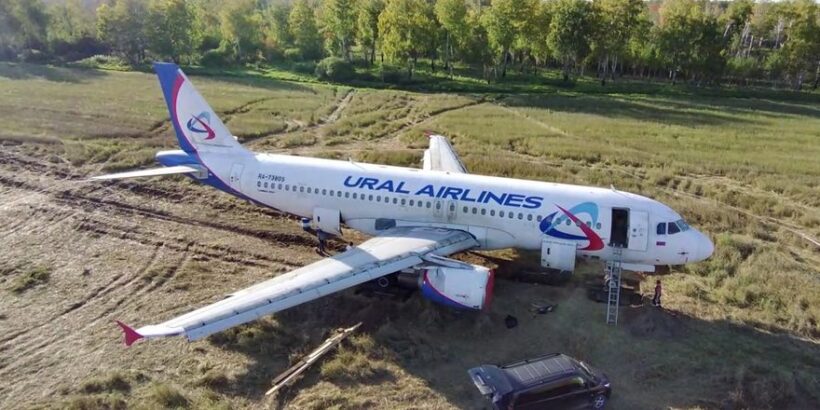The Ural Airlines A320 RA-73805 aircraft, which made an emergency landing on 12 September in a wheat field due to lack of fuel, will not be restored, the airliner will be dismantled for spare parts and written off. This is reported by Izvestia. Earlier, the CEO and owner of the airline Sergei Skuratov said that the aircraft is not broken and will be restored, the liner will continue to fly.
This development is due to the fact that MRO providers will not take responsibility for returning the aircraft to service without conducting the necessary work to investigate the strength of the aircraft’s structure. Izvestia, citing its sources, notes that no one has conducted such tests so far. Sergei Skuratov said that the plane will not be able to take off from a wheat field, as it is necessary to build a runway, which is labour-intensive and economically inexpedient. He also noted that the aircraft is insured.
The press service of Ural Airlines specified that the final decision on the fate of the Airbus A320 has not been made yet. They added that the carrier is in the negotiation process with the insurance company. The press service of Rosaviatsia said that the agency’s experts have not assessed the prospects of restoring the airworthiness of the aircraft that landed in a wheat field, because the investigation is still ongoing.
Earlier, the Russian Aviation website suggested that the A320 could leave the wheat field on its own. This would require waiting for snow and frost, and then preparing a runway for takeoff similar to the way runways are rolled out in Antarctica to receive and dispatch much heavier Il-76TD transport aircraft.
However, new information suggests that calculations of the potential costs of checking the integrity of the landing gear and other components of the aircraft, subsequent restoration of airworthiness and preparation of the runway for takeoff in a wheat field have shown that it would be more profitable to disassemble the airliner, making it a donor for the current fleet, and to write off the aircraft itself.
On 9 November, Rosaviatsia decided to cancel its previous report on this emergency landing, and a new commission was appointed due to newly discovered circumstances. This decision may indicate that the agency’s leadership was dissatisfied with the results of the investigation and the conclusions that followed from the report.
The original version of the document does not say what caused the cancellation of the landing in Omsk, where the plane was on its way from Sochi, and why the crew decided to cancel the landing, turn around and fly to Novosibirsk. At the same time, at the end of November, the squadron commander, on behalf of the airline’s management, offered Sergey Belov and Eduard Semyonov, the aircraft commander and co-pilot of Ural Airlines, to resign at their own request without giving any reasons. Both Sergey Belov and Eduard Semyonov refused to resign.
The landing distance required to land an aircraft with such a hydraulic system failure is 1856 metres, and the length of the runway at Omsk airport is 2500 metres, which ensured a safe landing. Weather conditions also allowed the plane to land safely at Omsk airport. The only thing known from the words of the Novosibirsk region authorities is that the crew requested a landing in Tolmachevo because there is a necessary base for repairs there.


